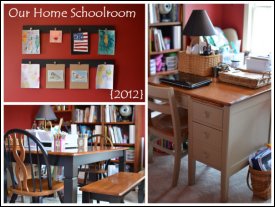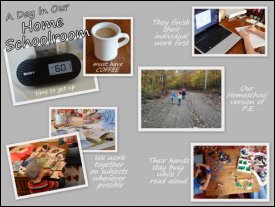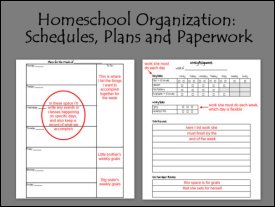Daily Homeschool Schedule
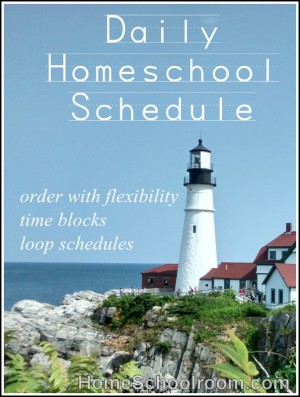
Want to follow along on a day in our homeschool? Let me share a bit about past year schedules, then we’ll get down to this year’s daily details.
A Brief History
My natural tendencies are to be a list-making drill sergeant task master. I can take the fun out of just about anything…but I’m maturing every year. This is our fourth year, and the history flows something like this:
- When I started homeschooling my kids (then ages 6 and 9) I planned our day on a spreadsheet with fifteen minute increments. I had a little icon showing which child I was working with. I spent a lot of time planning, and most of my plans were mom-intensive. I’m stressed just remembering it!
- By year two I ditched the small time slots, but still planned way too much, felt like I was running a dog-and-pony show, and never ever felt we had done enough.
- Our third year was much better. I learned to decrease my over-planning, stop making education “mom’s circus show,” and started working with blocks of time. I was finally finding the balance of a time-based schedule but with flexibility.
Ready to Start a New Year
Here we are at year four! I’ll still be using the scheduling that worked last year, like blocks of time, with a few extra things to keep me on track (and out of the stressed-out-and-grumpy-homeschool-mom category):
- When I am filling in our blocks, whether it’s individual work or the time we spend together, I make my guess of how long something will take and only fill 80% of each time block. This idea came from Sara at Amongst Lovely Things. It seems radical to a reformed over-planner driven to cross things off my list, and will hopefully help me be more realistic in how much I add to my list in the first place.
- I will make loop schedules for many of our time blocks. This idea came up in several blogs I was reading over the summer, and I realized it would help me be prepared for the blocks of learning we do together without having to plan those blocks each day or worry about whether we a certain block three days or four days on a particular week. I’m hoping it will also curb my tendency to feel “behind” if I don’t complete every block daily. (I’ll give a specific example of how a loop works in the details of our day.)
- In addition to having their list own lists of individual work, I will post our schedule each day so my children can see what we’ll be doing together. When reading about the way Charlotte Mason scheduled her students I recognized that I kept the plan for the day in my head or on my personal list. My kids were left not knowing what the day looked like ahead of time, having to ask me when they’d have time for personal activities, or being surprised by having to go run errands. That’s not fair, so I’ll be better about sharing my plan.
- Last but not least is what I call a “rolling start” to our mornings. I began this late last year, and it seems to be a magical way to have everyone work at their best. I’ll explain how this works in the details of our day.
After that lengthy introduction, let me share our daily flow which is broken up into orderly blocks of time. For details on what fills these time blocks (like my children’s individual work or what resources we use at Tea Time), see my post with our 2014-2015 Curriculum.
Morning Individual Work
This is where the rolling start comes in. We have two different mornings for my very different children: My daughter (age 12) has always needed a lot of sleep and is more alert in the evenings. My son (almost 9) is the quintessential early riser. He can’t do focused work later in the day, and even if he is up late he is still unbelievably alert and cheerful at 6 AM. After trying to start the school day together and either missing my son’s most alert time or dragging a groggy daughter out of bed and trying to get her to eat breakfast when she wasn’t hungry yet, I learned to be flexible.
Morning Schedule for My Early Riser
My son and I get up by 6:30. I am not naturally a morning person and must have coffee before conversation. My son knows this so he plays while I try to lift the fog. By about 7:30 he and I sit down to breakfast together. After that we head to my bed for his first Language Arts block: he reads to me (his least favorite work of the day), then I read to him from things like picture books or nonfiction books his sister is less interested in (about bugs or spies). Reading in my bed makes this time as pleasant as possible.
Then we both get dressed and tidy our rooms, meeting back downstairs by 9:00 to spend the next two hours on his individual work. Remember, though, that even though he has 2 1/2 hours blocked out for his individual work, I only plan two hours worth of work! If he works diligently he’ll have a little free time. I give him a list of his daily work, and in Charlotte Mason fashion I keep his lessons short and varied, and he knows what must be done and how long each lesson will be.
Morning Schedule for My Late Sleeper
I allow her to wake naturally or set her own alarm. Some people may think allowing her to sleep in is lazy, but I feel I’m letting her get what her body needs and using our flexibility to it’s best advantage. I will add that she is also is focused and works well independently. She works from a weekly list with the flexibility to complete subjects when she wishes as long as the work is done without complaining. One caveat is that any of her own work not finished by the time we start our blocks together will be done on her own time later in the day. I plan on her having about three hours of individual work (remember: only 80% planned).
11:00 Tea Time
At 11:00 we come together for Tea Time, where we share a sweet treat and beautiful things. We started this last year and it has been a huge hit. I’m expanding it this year because it worked so well for fitting in the “extras” that really matter, is a great transition between individual work and working together, and because it builds our relationships. This year, with us starting school at different times, it will hold extra importance as our sort of “morning meeting.”
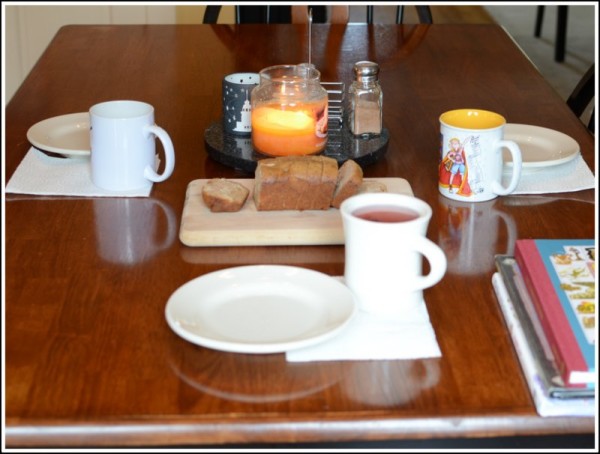
Here’s an illustration of how loop schedules work for our time blocks, using Tea Time as an example:
- Picture study
- SQUILT lesson
- Sketch Tuesday
- Listen to Classics for Kids podcast
- Poet Study
I can change the loop as needed, make a longer loop and add some things in twice if I want to do them more often…ultimate flexibility.
After we do the things that we do each time we sit down for Tea Time (like Bible reading), we just do the next thing on the loop. It helps because I don’t have to take time each day to figure out what we’ll do during Tea Time…I just do the next thing! And if we have a busy week and only have Tea Time twice that week I don’t feel I’ve missed things or am behind for the week.
11:45 Fresh Air
This is when I walk our dog. The kids can come with me, play outside in our yard, or play inside (in bad weather). This outside time is good for my health, necessary for our pet, and also gives my introverted brain a little break.
12:30 Learning Lunch
Again, my curriculum post details what might happen during our Learning Lunch. With our varied morning start times this is also when we watch CNN Student News (instead of at breakfast).
1:00 Together Time
This is when we work on the subjects that we do together with quite a bit of variety each day. I’ll use a loop schedule for this block, too. Frequently much of this time is spent reading aloud.
The Rest of the Day
By 2:00 my son is done his official schoolwork and goes off to pretend to be a secret agent or build a robotic ping pong ball shooter or heads outside to jump in leaves or snow, as the season dictates! My daughter will have individual work to finish and I’ll be available to her. I’ll usually try and take some time for my personal “Quiet Time” in my room where I read, write, plan…or just close my eyes and sit without anyone talking to me.
We’ll usually read aloud again later in the day from a chapter book for our book club or a just-for-fun book.
Disclaimer
Of course this is our typical at-home day, which is not an every day occurrence! Throw in extracurricular activities and errands, fun with friends and family, weather calling us to hike or build a snowman, or all those things that come with kids, pets and a home (The dog ate what? Everything in the freezer is melting?) and we often have atypical days. But it’s all good as long as we’re living and learning together!
Click over to the annual Day-in-the-Life blog hop to see how other homeschoolers plan their day!
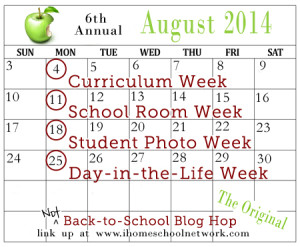
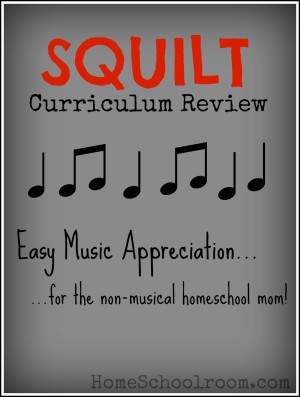
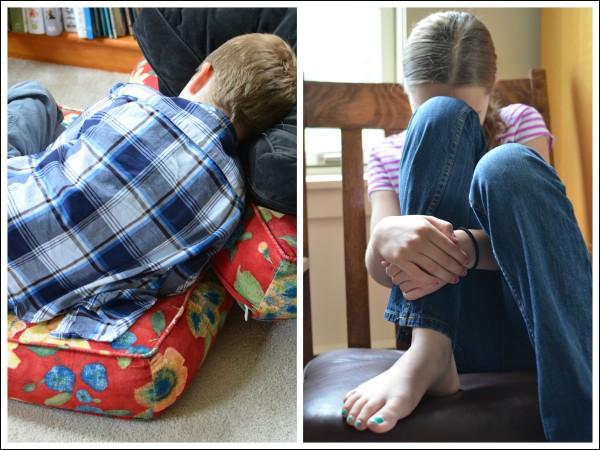
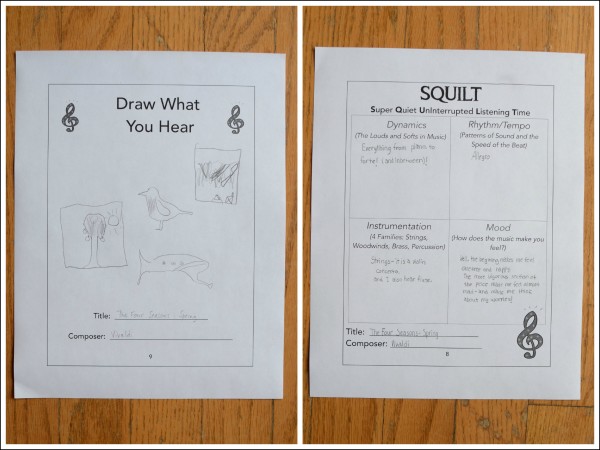
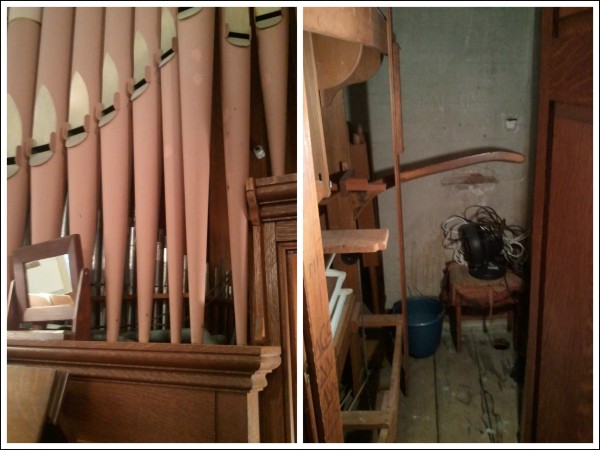

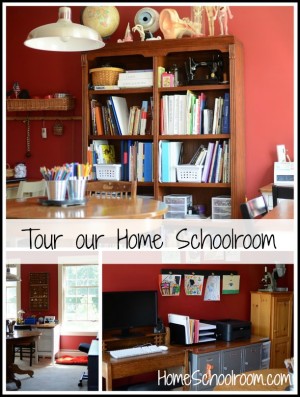
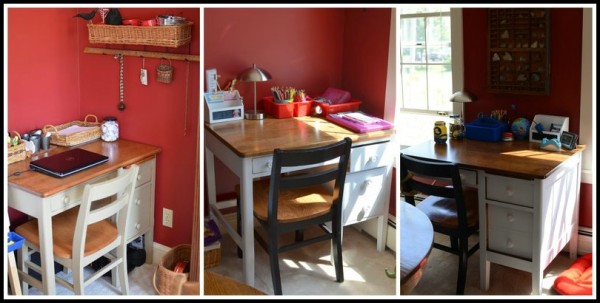
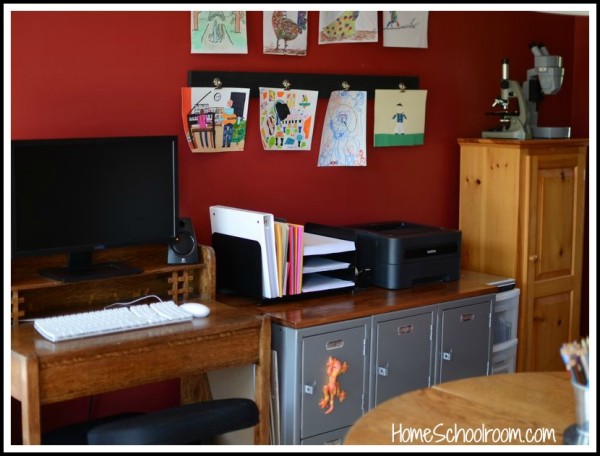
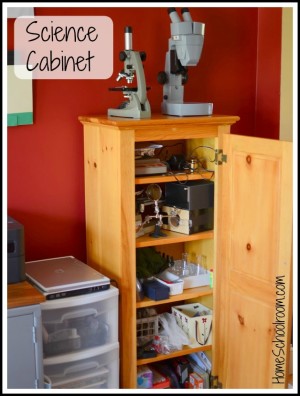
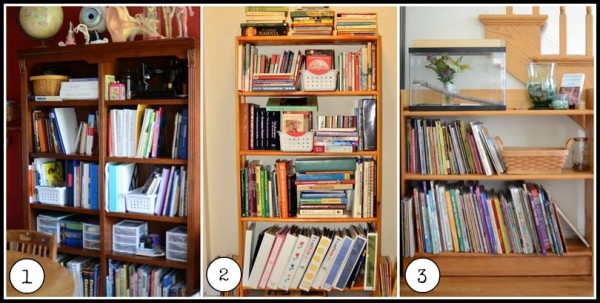
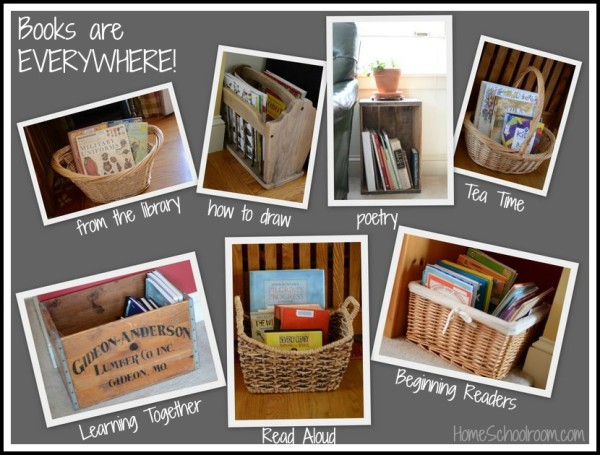
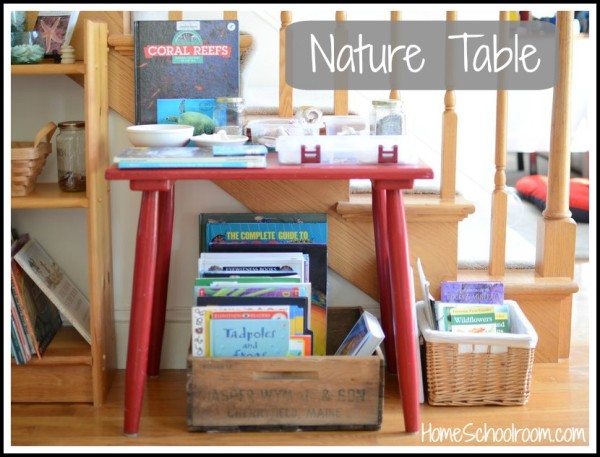
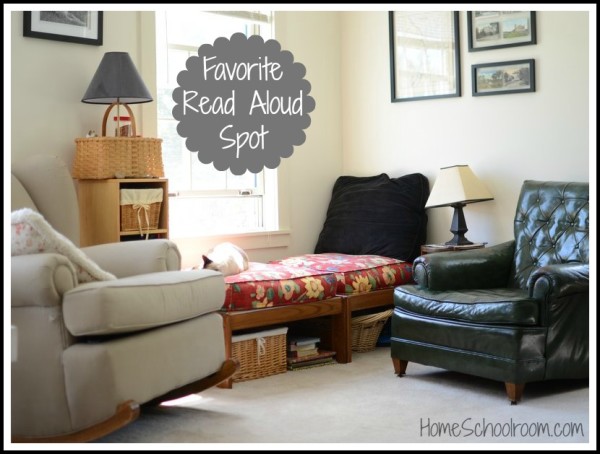
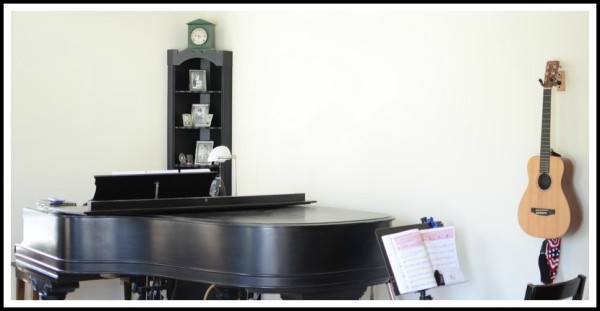
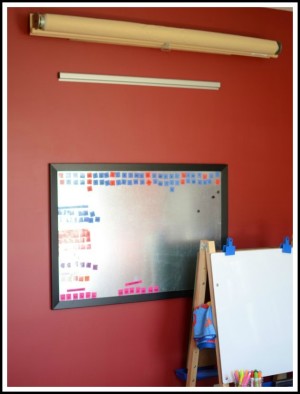
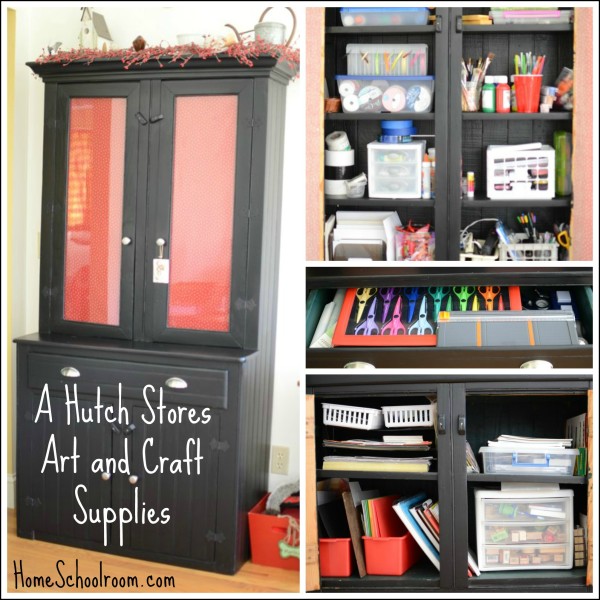
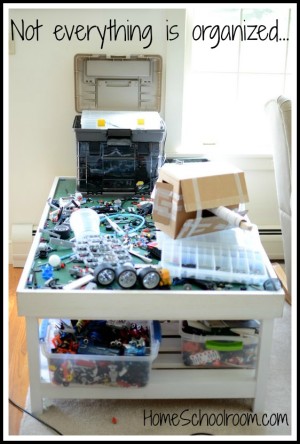
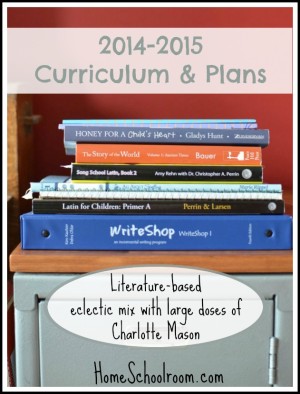
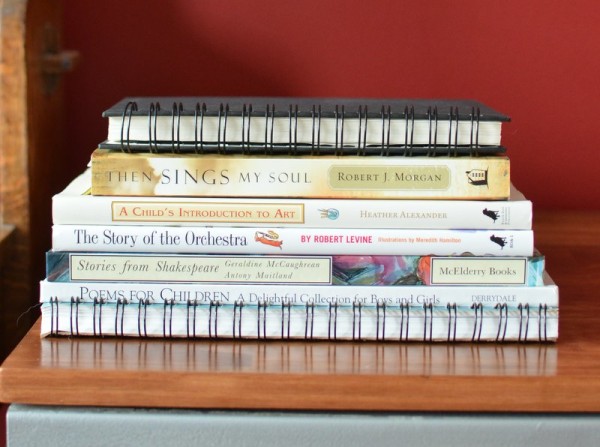

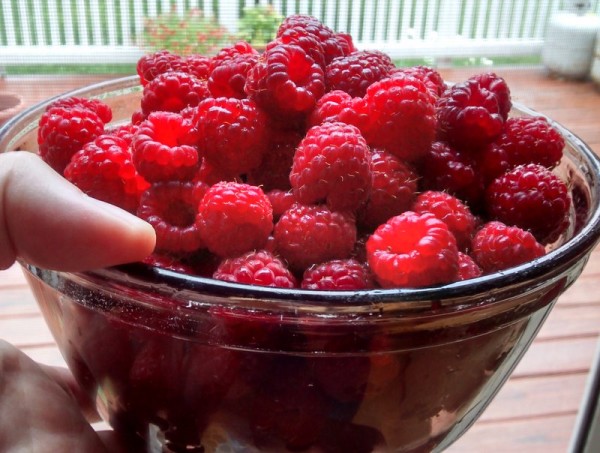
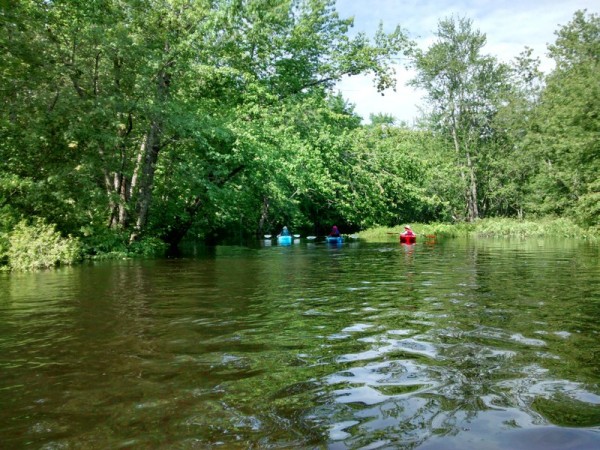
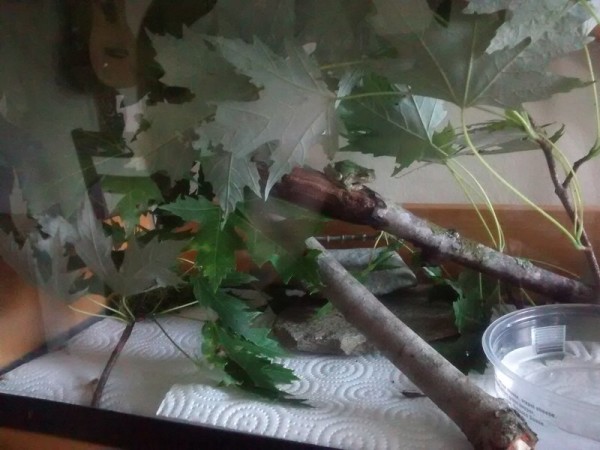
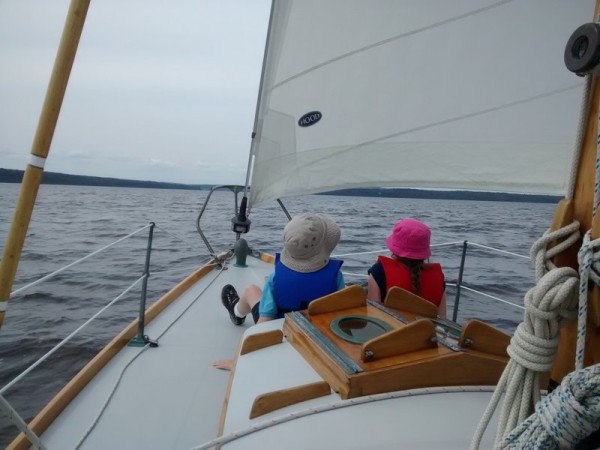
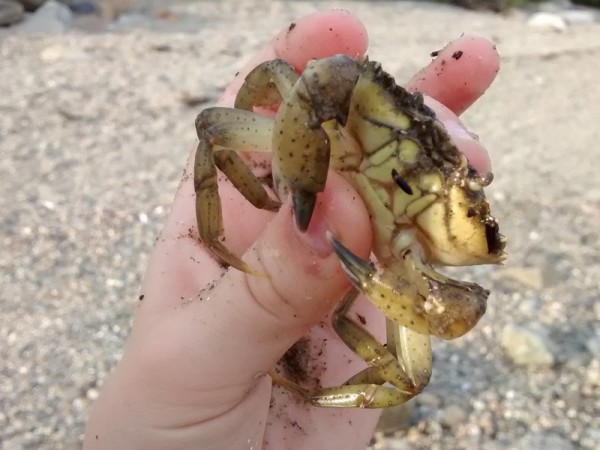
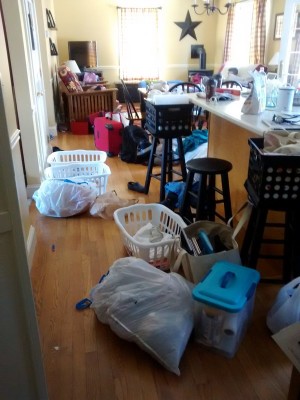




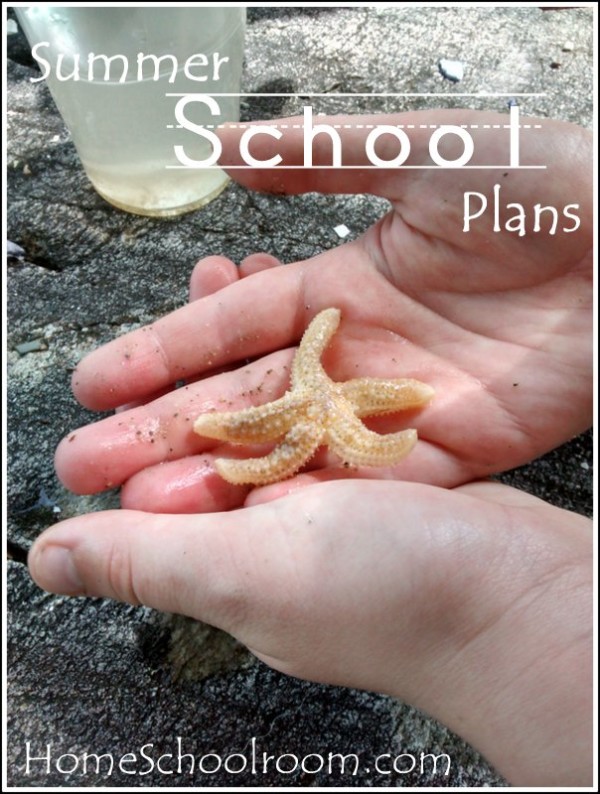
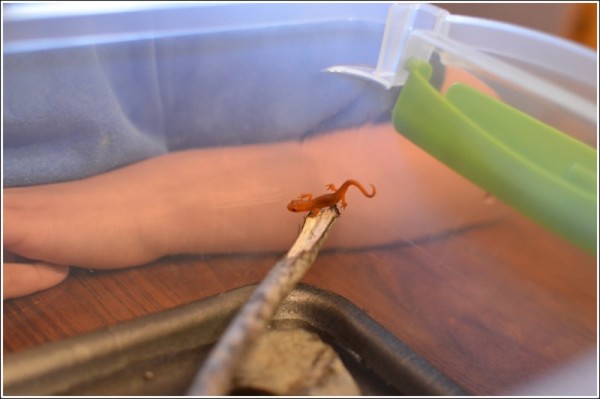

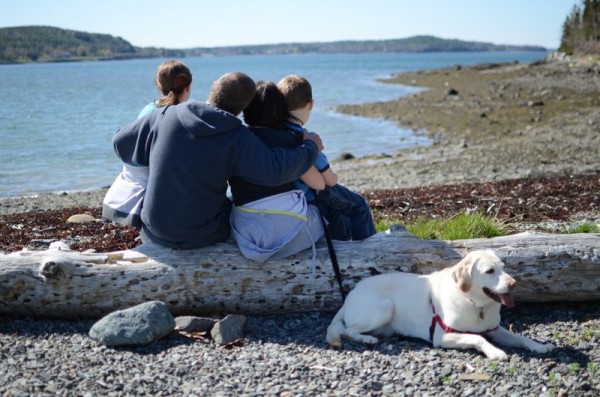
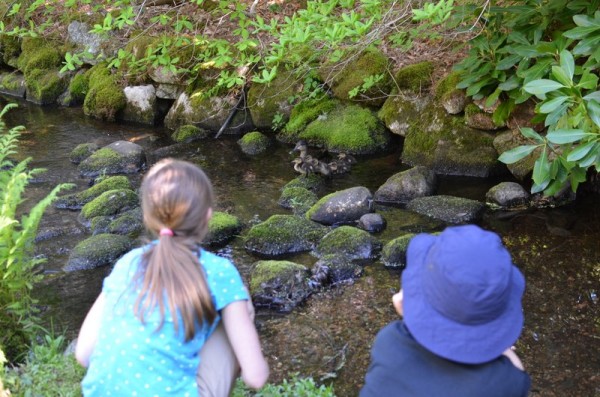
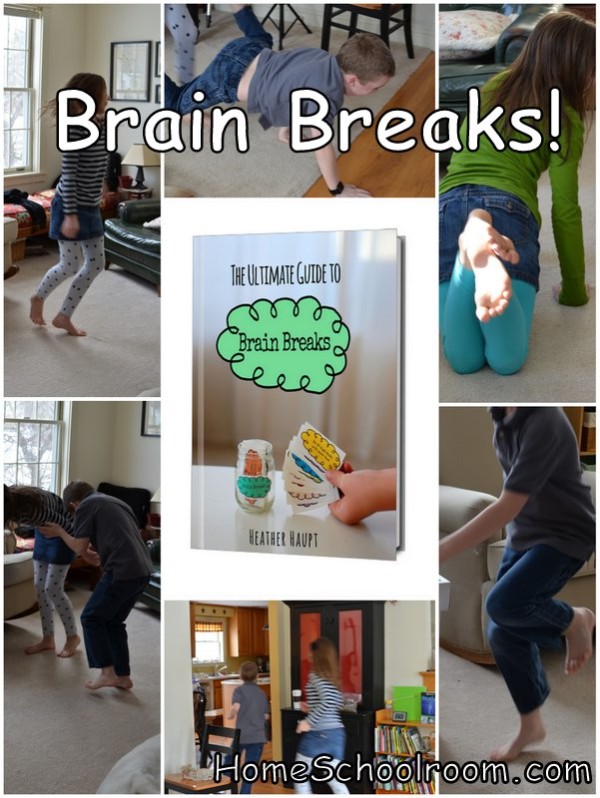
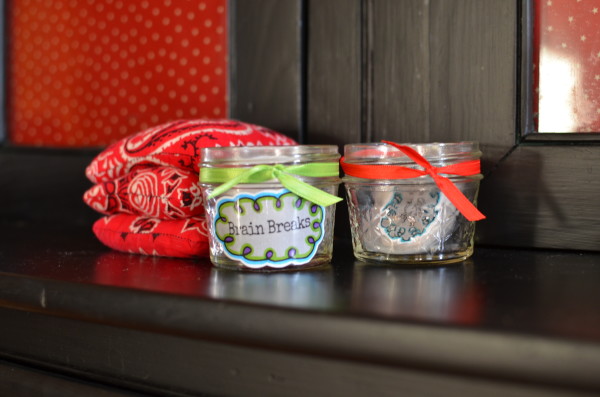
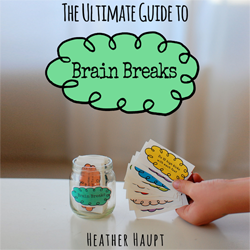

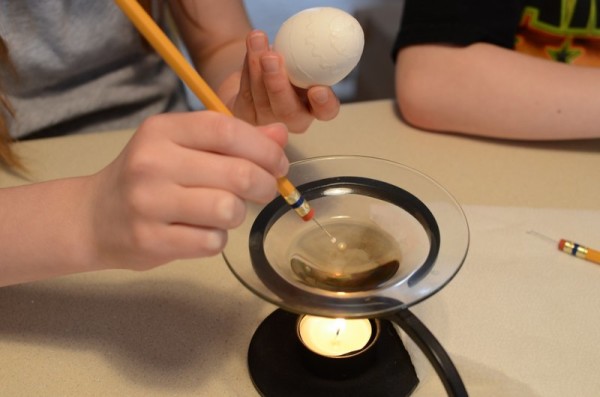
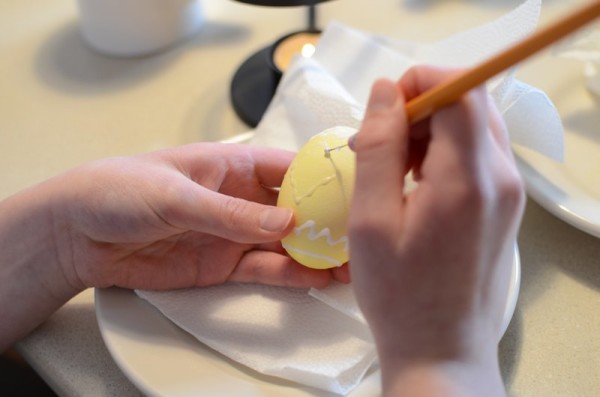
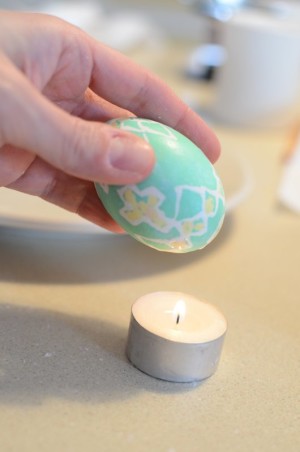

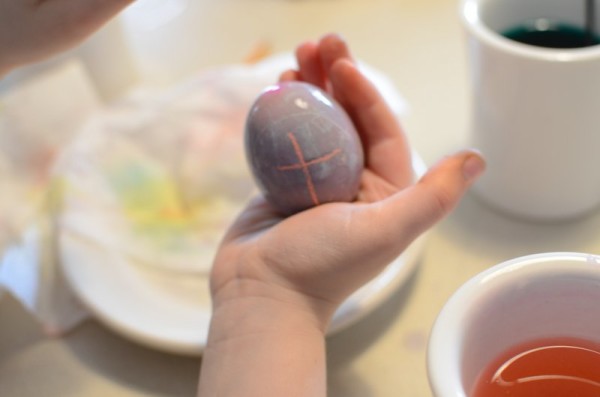



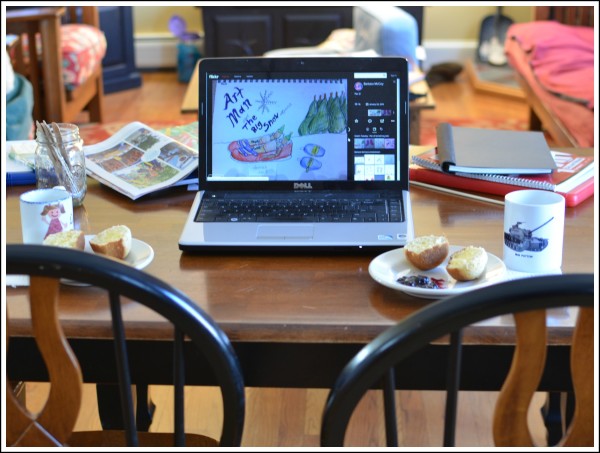

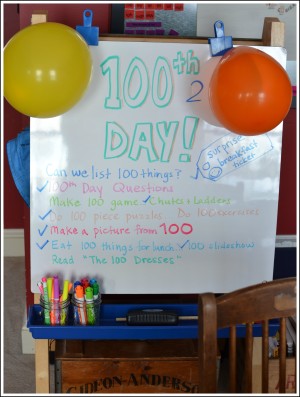
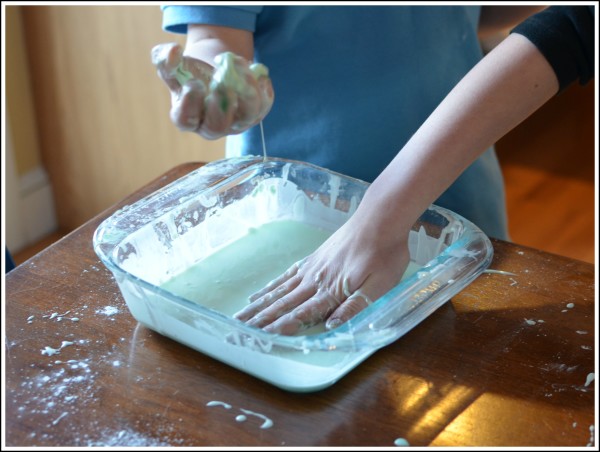


 Hi, I'm Heidi and I homeschool my two sweet kids. I want them to know that learning is an exciting lifelong adventure! We love great books, unit studies, notebooking, lapbooking, and hands-on learning.
Hi, I'm Heidi and I homeschool my two sweet kids. I want them to know that learning is an exciting lifelong adventure! We love great books, unit studies, notebooking, lapbooking, and hands-on learning.